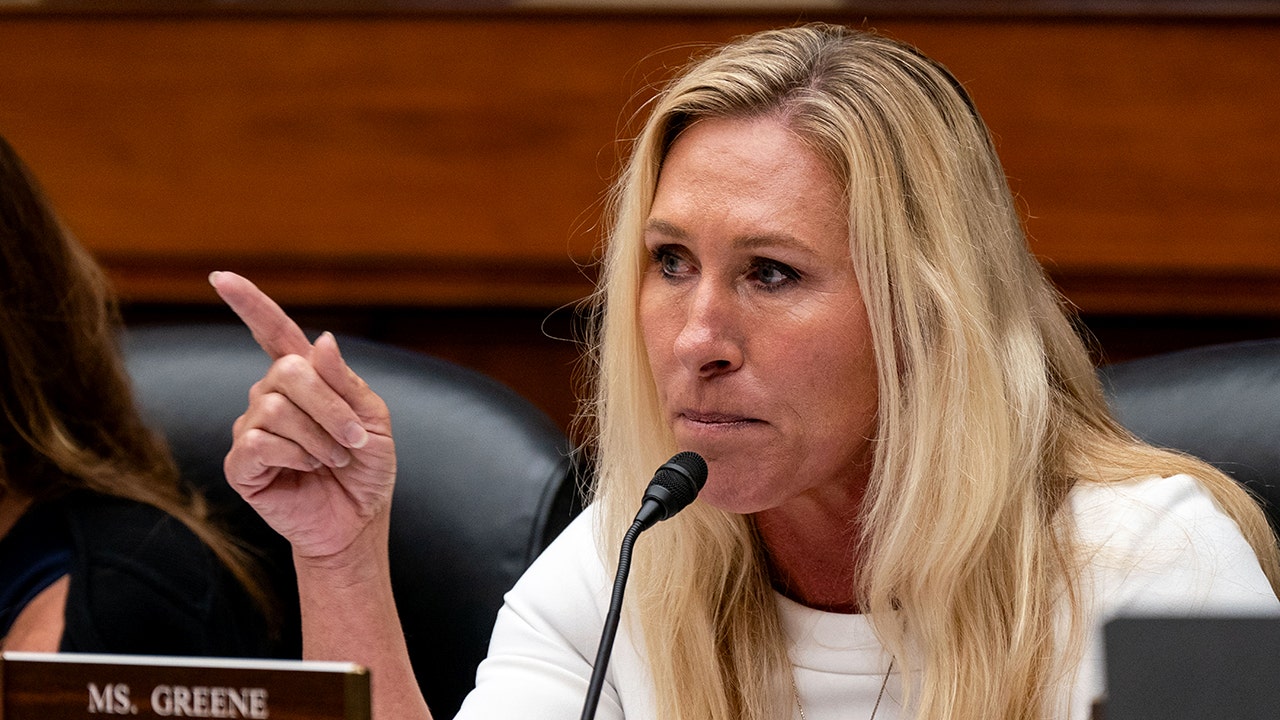Wisconsin
‘More than just a job’: Wisconsin dairy industry focused on workforce amid state’s labor shortage

Businesses across Wisconsin have struggled to recruit and retain employees during record-low unemployment. The state’s dairy farms and processing plants are no exception.
Sandy Larson is general manager of Larson Acres, a 2,800-cow dairy farm in Evansville with 75 employees. She said the thinking around recruiting and retaining employees has changed in recent years.
“Over the last several years, our engagement and training and opportunities to grow all mean a lot to the employees,” Larson said. “If I can provide a job where they know they have the growth opportunities, they can learn something new and get a promotion, that excites them.”
She said finding workers hasn’t been an issue for her farm, though she knows other dairy producers that have to actively look for applicants. But Larson said holding on to the employees they’ve already trained is a top concern.
She said for years, the farm has worked to boost morale through an annual appreciation event, employee of the month program and fun contests around holidays like Halloween.
As the labor market has gotten more challenging, Larson said she’s thinking about the whole package of benefits she can offer workers, from traditional items like health insurance and paid time-off to more unique benefits like an allowance for work clothes. She said providing rental housing near the farm has become an important benefit because of the shortage of affordable options in the area.
“Sometimes we’re competing with very high wages at nearby manufacturers or whatever and that’s really hard,” she said. “They’ve got to want to work on a farm. They know there’s going to be long hours, they know they’re going to get dirty, so it’s got to be more than just a job for them.”
Larson said it’s not just the hands-on farm labor like milking cows and driving a tractor where she has to fill jobs. She said finding IT professionals to keep the farm’s technology running is one of the most challenging areas to hire.
“We’ve got a computer program for (milking) the cows, we’ve got a program for feeding the cows, we’ve got a program in the tractors for planting the corn and harvesting the corn and the hay,” she said. “We use a ton of Excel sheets. But finding somebody that really understands all those different areas, that’s difficult.”
Like any employer, Larson said finding ways to support employees has become a central part of her farm’s budget discussions and their plans for growth in the coming years.
Agriculture across the United States has become increasingly dependent on workers from other countries to fill jobs. But Larson said seasonal, guest worker programs like H-2A often don’t work for dairy farms that milk cows all year long.
“It takes a month or two to get the training complete, they finally really get the hang of it and then they have to go home on an H-2A visa,” she said.
Farms aren’t the only part of the dairy industry struggling with labor. Leaders in the dairy industry have reported that processing plants have had to cut back operating hours because of a shortage of workers. That’s part of what has contributed to the oversupply of milk that has weighed down milk prices in recent months.
Leonard Polzin is dairy markets and policy specialist for the University of Wisconsin-Madison’s Division of Extension. He told Wisconsin Public Radio’s “Central Time” that most dairy processors have ongoing recruitment efforts and continue to think about ways to compete with employers hiring from the same labor pool.
But he said processors are also starting to pay more attention to advancements in technology and how automation could make jobs easier or replace them altogether.
“If they can take what once was done by 10 people and do it by one person through the advent of additional investment, that’s always a topic of discussion,” he said.
Adding automation or other technology isn’t a simple fix. Polzin said high interest rates and uncertainty about demand for dairy products on the world market mean many processors are holding off on new investments.

Wisconsin
Better Know A Badger – 2025 four-star lineman Hardy Watts

Better Know A Badger – 2025 four-star lineman Hardy Watts
MADISON, Wis. – It turned out that Luke Fickell had no reason to worry.
The University of Wisconsin head coach was hopeful that the results on the field wouldn’t cause members of his highly ranked third recruiting class to start rethinking their commitment or, worse yet, reopen their decision-making process entirely.
From the time the Badgers’ 2024 season ended without a bowl game for the first time in 23 years to the first day of the early signing period, Wisconsin’s staff only saw one prospect de-commit. Twenty-three kids signed paperwork to join Fickell’s program, a class that ranks 20th in the Rivals.com rankings with 10 four-star recruits from eight different states.
“To see guys not waver,” Fickell said. “That faith and belief that the games and what you see on Saturday isn’t everything. For those guys to hold with us and believe in us … relationships, trust, and belief in this process still win out.”
Adding depth to the offensive line, we look at the signing of Brookline (MA) Dexter’s Hardy Watts and how his addition improves the program.
Stats
Watts worked all over the offensive line during his high school career, but he spent this past season working primarily at right tackle. It was a position that his school needed him to play and the spot where he felt the most comfortable. It benefited him, as Watts earned all-conference recognition.
“I think I improved my chemistry and my ability to work as part of a unit, rather than making plays and flashy blocks,” Watts said. “I was learning the footwork of certain types of blocking and steps. I really refined what was already there and brought it back to working as part of a unit, making sure I am not messing up any assignments, and consistency.”
Recruiting Competition
The 17th commitment in Wisconsin’s 2025 class, Watts committed to the Badgers over a top group that included Clemson and Michigan. Watts also had two dozen offers from Power-Four schools like Alabama, Georgia, Miami, Penn State, Tennessee, and Texas A&M.
“There were a few schools that never stopped pursuing me,” Watts said. “They were some new schools that came forward with an offer, but I just politely declined, explained to them the situation that I was locked in and wasn’t going anywhere.”
Recruiting Story
Wisconsin
Wisconsin Lottery Mega Millions, Pick 3 results for Dec. 24, 2024
Manuel Franco claims his $768 million Powerball jackpot
Manuel Franco, 24, of West Allis was revealed Tuesday as the winner of the $768.4 million Powerball jackpot.
Mark Hoffman, Milwaukee Journal Sentinel
The Wisconsin Lottery offers multiple draw games for those aiming to win big. Here’s a look at Dec. 24, 2024, results for each game:
Winning Mega Millions numbers from Dec. 24 drawing
11-14-38-45-46, Mega Ball: 03, Megaplier: 3
Check Mega Millions payouts and previous drawings here.
Winning Pick 3 numbers from Dec. 24 drawing
Midday: 7-9-6
Evening: 2-0-2
Check Pick 3 payouts and previous drawings here.
Winning Pick 4 numbers from Dec. 24 drawing
Midday: 9-8-7-5
Evening: 6-3-7-0
Check Pick 4 payouts and previous drawings here.
Winning All or Nothing numbers from Dec. 24 drawing
Midday: 03-04-06-07-09-10-14-16-17-18-19
Evening: 02-05-07-08-12-13-17-18-19-20-21
Check All or Nothing payouts and previous drawings here.
Winning Badger 5 numbers from Dec. 24 drawing
05-19-22-23-24
Check Badger 5 payouts and previous drawings here.
Winning SuperCash numbers from Dec. 24 drawing
02-03-06-30-31-34, Doubler: N
Check SuperCash payouts and previous drawings here.
Feeling lucky? Explore the latest lottery news & results
Are you a winner? Here’s how to claim your lottery prize
- Prizes up to $599: Can be claimed at any Wisconsin Lottery retailer.
- Prizes from $600 to $199,999: Can be claimed in person at a Lottery Office. By mail, send the signed ticket and a completed claim form available on the Wisconsin Lottery claim page to: Prizes, PO Box 777 Madison, WI 53774.
- Prizes of $200,000 or more: Must be claimed in person at the Madison Lottery office. Call the Lottery office prior to your visit: 608-261-4916.
Can Wisconsin lottery winners remain anonymous?
No, according to the Wisconsin Lottery. Due to the state’s open records laws, the lottery must, upon request, release the name and city of the winner. Other information about the winner is released only with the winner’s consent.
When are the Wisconsin Lottery drawings held?
- Powerball: 9:59 p.m. CT on Monday, Wednesday, and Saturday.
- Mega Millions: 10:00 p.m. CT on Tuesday and Friday.
- Super Cash: 9:00 p.m. CT daily.
- Pick 3 (Day): 1:30 p.m. CT daily.
- Pick 3 (Evening): 9:00 p.m. CT daily.
- Pick 4 (Day): 1:30 p.m. CT daily.
- Pick 4 (Evening): 9:00 p.m. CT daily.
- All or Nothing (Day): 1:30 p.m. CT daily.
- All or Nothing (Evening): 9 p.m. CT daily.
- Megabucks: 9:00 p.m. CT on Wednesday and Saturday.
- Badger 5: 9:00 p.m. CT daily.
Missed a draw? Peek at the past week’s winning numbers.
This results page was generated automatically using information from TinBu and a template written and reviewed by a Wisconsin editor. You can send feedback using this form.
Wisconsin
Wisconsin RB enters transfer portal. NCAA waiver gives senior another year of eligibility

An aerial view of Camp Randall Stadium in Madison, Wis.
An aerial view of Camp Randall Stadium in Madison, Wis., home of the Wisconsin Badgers.
MADISON – A recent court ruling has opened the door for former junior college players to gain another year of NCAA eligibility.
It appears that Tawee Walker is going to take advantage of the opportunity.
According to On3, Wisconsin’s senior running back will enter the transfer portal in search of a home for next season. The news came one day after the NCAA approved a blanket waiver granting one more year of eligibility to athletes who competed at a non-NCAA school for one or more years and would have otherwise exhausted their eligibility during the 2024-25 school year.
Walker fits the bill. He played the the 2021 season at Palomar College. a junior college in San Marcos, California, before competing for Oklahoma in 2022 and ’23 and Wisconsin this season. The NCAA counts his junior college season towards his four years of college eligibility.
The waiver stems from a case brought forward by Vanderbilt quarterback Diego Pavia. A Tennessee court ruled that counting the two seasons he played at a junior college toward his NCAA eligibility violated the Sherman Antitrust Act.
Walker, a 5-foot-9, 218-pound Las Vegas native, led the Badgers with 864 yards in 190 carries, a 4.5-yard average, and scored 10 touchdowns.
He begin the season sharing the No. 1 tailback role with Chez Mellusi and blossomed after Mellusi took what proved to be a permanent leave Oct. 3.
As Wisconsin’s primary ball carrier Walker ran for 718 yards in 152 carries, a 4.7-yard average, with nine touchdowns.
His best stretch was a three-game run against Purdue, Rutgers and Northwestern when he gained 418 yards in 66 carries, a 6.3-yard average, and scored six times.
-
/cdn.vox-cdn.com/uploads/chorus_asset/file/24924653/236780_Google_AntiTrust_Trial_Custom_Art_CVirginia__0003_1.png)
/cdn.vox-cdn.com/uploads/chorus_asset/file/24924653/236780_Google_AntiTrust_Trial_Custom_Art_CVirginia__0003_1.png) Technology5 days ago
Technology5 days agoGoogle’s counteroffer to the government trying to break it up is unbundling Android apps
-

 News6 days ago
News6 days agoNovo Nordisk shares tumble as weight-loss drug trial data disappoints
-

 Politics6 days ago
Politics6 days agoIllegal immigrant sexually abused child in the U.S. after being removed from the country five times
-

 Entertainment6 days ago
Entertainment6 days ago'It's a little holiday gift': Inside the Weeknd's free Santa Monica show for his biggest fans
-

 Lifestyle6 days ago
Lifestyle6 days agoThink you can't dance? Get up and try these tips in our comic. We dare you!
-

 Technology1 week ago
Technology1 week agoFox News AI Newsletter: OpenAI responds to Elon Musk's lawsuit
-
/cdn.vox-cdn.com/uploads/chorus_asset/file/25672934/Metaphor_Key_Art_Horizontal.png)
/cdn.vox-cdn.com/uploads/chorus_asset/file/25672934/Metaphor_Key_Art_Horizontal.png) Technology1 day ago
Technology1 day agoThere’s a reason Metaphor: ReFantanzio’s battle music sounds as cool as it does
-

 News2 days ago
News2 days agoFrance’s new premier selects Eric Lombard as finance minister



















